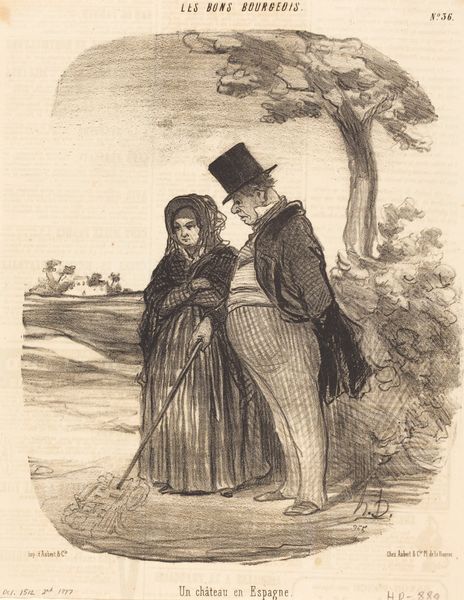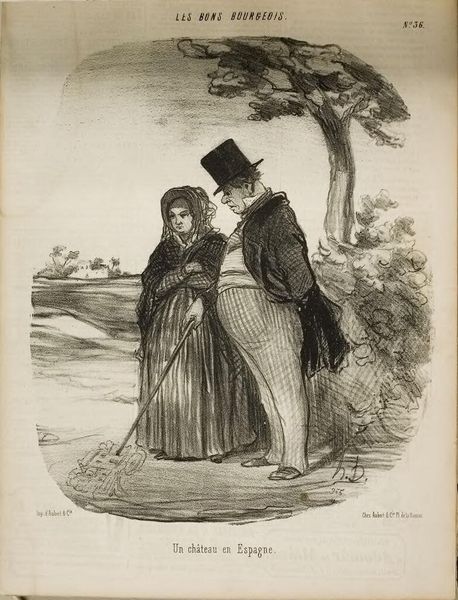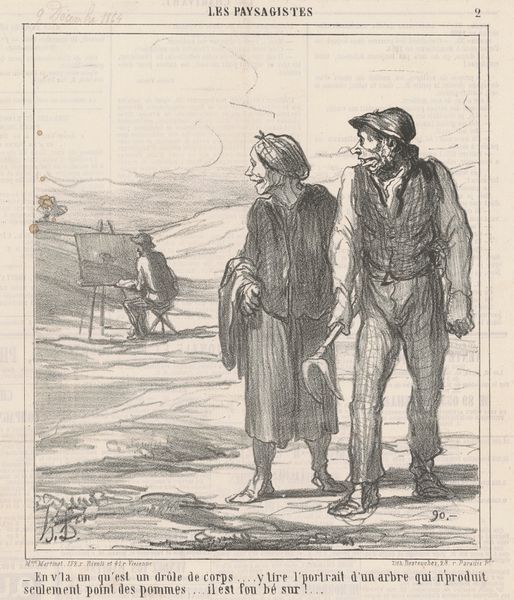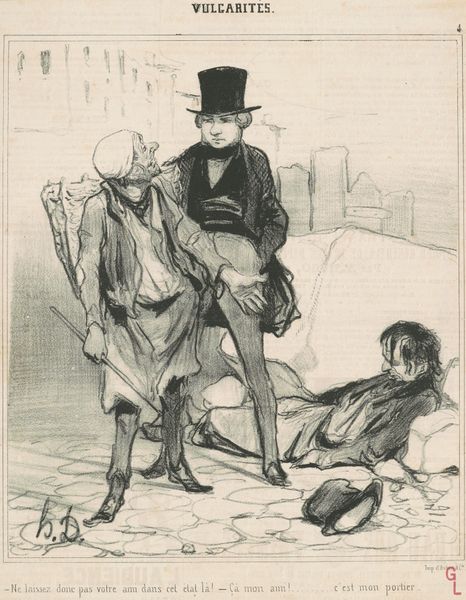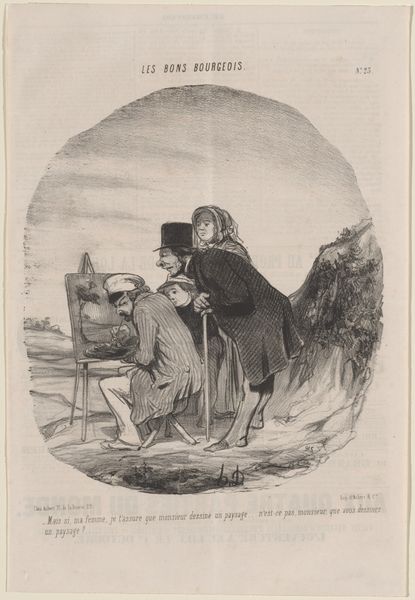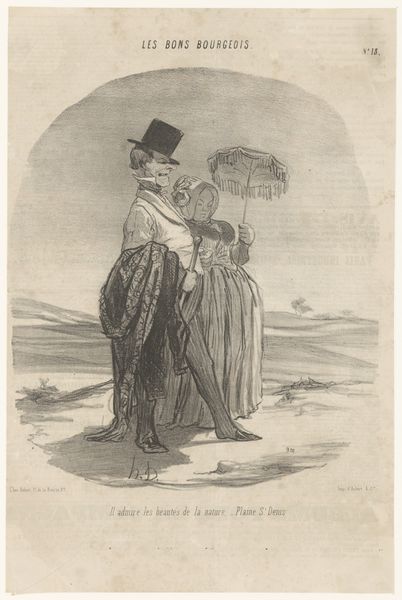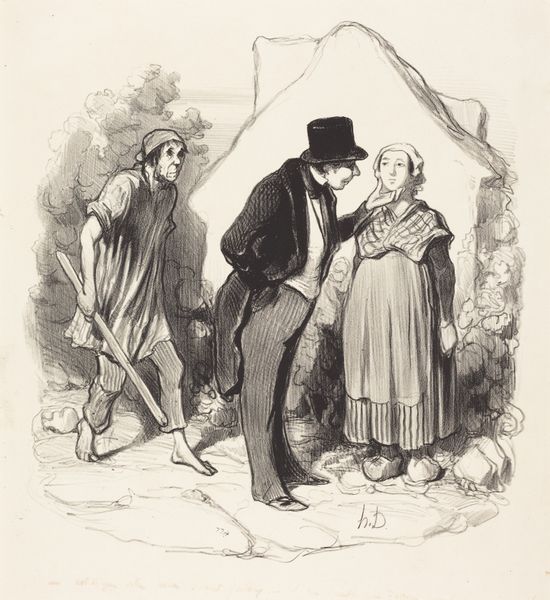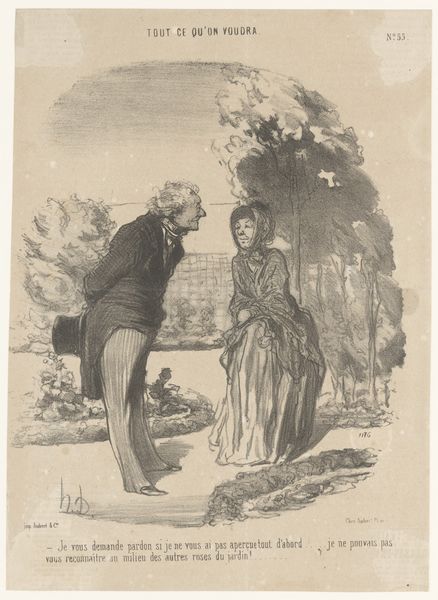
Dire pourtant que j'avais planté des pommes de terre ... c. 19th century
0:00
0:00
lithograph, print
#
pencil drawn
#
lithograph
# print
#
caricature
#
pencil sketch
#
landscape
#
figuration
#
romanticism
#
genre-painting
#
history-painting
Dimensions: image: 10 1/16 x 8 3/4 in. (25.56 x 22.23 cm)
Copyright: National Gallery of Art: CC0 1.0
Curator: Here we have Honoré Daumier’s lithograph, "Dire pourtant que j'avais planté des pommes de terre…," circa the 19th century. Editor: It has such a weighty, melancholic mood to it. I'm struck by the contrasting textures—the man's meticulously striped trousers against the rough heap of what seems to be truffles. There’s also an air of despondency captured by the figure in the forefront and reinforced through his gestural pose, leaning, almost defeated. Curator: Indeed. Note how Daumier employs lithography, a medium born from the Industrial Revolution, to critique social realities. The scene reveals a tension between expectation and result, promise and failure, labor and reward. We have what appears to be the harvest. Editor: Speaking of labour, look at the detail in rendering the textures! The rough clothes, coarse and dense with hatched pencil strokes speak volumes of peasant hardship. Curator: Precisely, Daumier uses this technique to create the effect of three-dimensionality, capturing the physical bulk of the figure and the earthy, tangible reality of their work. He highlights the societal circumstances of 19th century France by subtly embedding critiques of labour systems and the commodification of nature itself within these scenes. Editor: Absolutely, Daumier, often regarded as a Romanticist and painter of modern life, turns conventional artistic tropes, such as the romantic landscape, on its head to give attention to laboring-class folk and satirize societal injustices. Curator: What an excellent point. As we've seen, a seemingly straightforward scene of a harvest morphs into a multi-layered exploration of artistic expression and a commentary on the circumstances in which individuals grapple with disappointment and dashed hopes. Editor: I leave here thinking that beyond its striking formal composition, this work is testament to Daumier’s sensitive observation of humanity and a compelling insight into the materiality of the land. It really causes reflection on the work and effort for which the harvest came about.
Comments
No comments
Be the first to comment and join the conversation on the ultimate creative platform.
